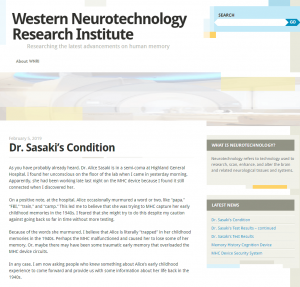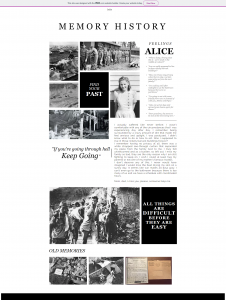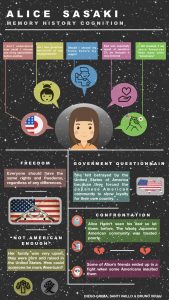In February and March of 2019, an English class at the Col.legi Montserrat secondary school in Barcelona, Spain participated in Arising From Injustice, an educational alternate reality game about U.S. history and related humanities themes, such as citizenship, civil liberties, and discrimination. The game is based on the history of Japanese Americans and their incarceration in government camps during World War II.
The Col.legi Montserrat teacher, Greg O’Dea, was looking for an engaging way to have the 26 students in his class gain practice in the English language. Over the course of four weeks, the students used English to discover storyline clues, solve history-related puzzles, and create media artifacts related to the story.
The main topics covered were the attacks on Pearl Harbor, the evacuation and incarceration of Japanese Americans on the U.S. west coast, life in the incarceration camps, the “loyalty questionnaire,” and the Japanese American segregated military service. The game also helped students develop 21st century learning skills, utilize primary historical resources, examine the character values of loyalty, sacrifice, and perseverance, and create digital media artifacts.
GAME START
The game started with the students receiving a newspaper clipping about a researcher being found unconscious and taken to the hospital.
The news article referred to a website that contains more information about the researcher, Dr. Alice Sasaki, and her research on a memory recording device. According to her colleague, Dr. Nicholas Remski, she was recording memories from her childhood during World War II when she collapsed.
Dr. Remski discovered that despite being in a coma, she would respond to thoughts that were fed through the memory recording device into her brain. He enlisted the help of the students to create thoughts and stories related to her memories so that they might help revive her.
MISSION ONE
Dr. Remski emailed students with clues about how to access the Memory History Cognition control panel that held Dr. Sasaki’s memory data. Each team had to find four code words hidden on various websites related to the attack on Pearl Harbor and the evacuation of Japanese Americans at the start of World War II. Each student needed to discover his/her own code word so that the team could put together all the words in order to unlock the memory data. This game/learning mechanic ensured that all students were actively participating and working together as a team.
After unlocking the memory security data, students then created a word cloud based on Dr. Sasaki’s memories about living through the early part of World War II. They sent their word cloud to Dr. Remski, who reported that Dr. Sasaki started murmuring some of their words after he fed them into her brain using the memory recording device.
MISSION TWO
Student teams had to next discover a numeric code that was hidden in a series of websites related to living in one of the 10 incarceration camps where Japanese Americans were sent to during the war. The code unlocked more of Dr. Sasaki’s memories about living in the camp.
Student teams then created a blog post that described what they thought Dr. Sasaki was feeling when she was living through her memories of life in the camp.
MISSION THREE
This puzzle had student teams searching through various websites related to the “loyalty questionnaire” in order to unlock Dr. Sasaki’s memories about the dilemma faced by Japanese American families in answering the questionnaire.
Dr. Remski then asked the students to create an infographic about the loyalty questionnaire and the feelings the Dr. Sasaki was going through during this period.
MISSION FOUR
The final mission featured a photo puzzle in which students were each given a piece of a photo and had to find the original, historical photo on various websites about the Japanese American segregated military units
After unlocking the memory security data, each team was asked to create a video slideshow that described Dr. Sasaki’s feelings about her brother joining the U.S. Army.
SHARING AND REFLECTION
At the end of each mission, students used a discussion forum to comment on and discuss the media artifacts created by the other teams. This sharing and reflection process is a critical component for student learning, so this process was given a full day or longer to complete.
RESEARCH SUMMARY
Statistical analysis of pre- and post-survey data showed that significant learning (p<.05) occurred for all of the primary learning topics about Japanese American World War II history. In particular, learning was strongest on the topics of the “loyalty questionnaire” (t=9.76),
Japanese American segregated military service (t=4.37), incarceration camp experience (t=4.35), and evacuation order (t=4.34).
COMMENTS
“It is an innovative way of teaching history, which is much more attractive to students.” (Roger C., student)
“I liked learning about all that history through creative ways like the missions.” (Oriol A., student)
“Overall it was a great experience. This was a wonderful way for kids here to learn more about WWII.” (Greg O’Dea, teacher)







